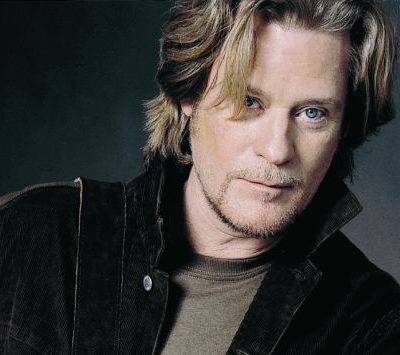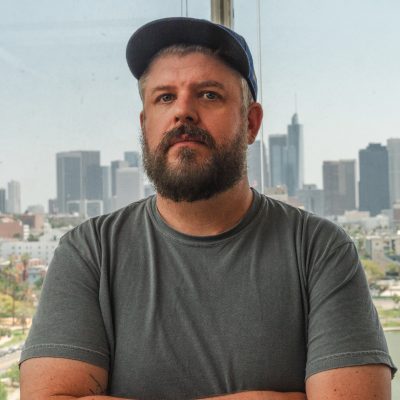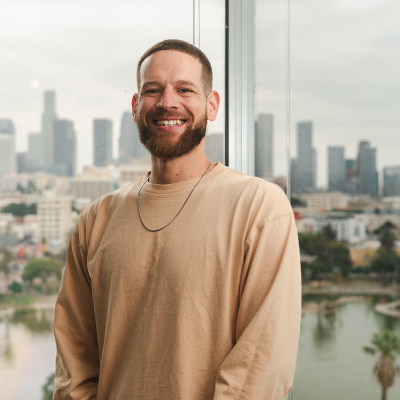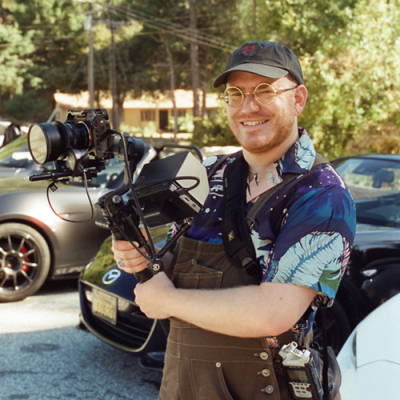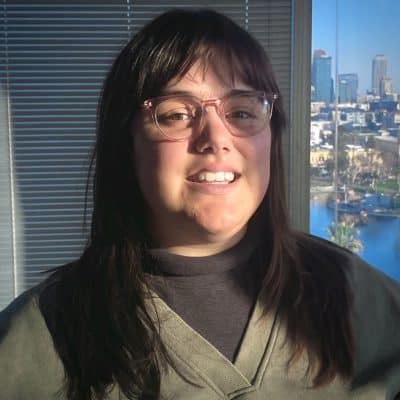Episode notes
Daryl Hall, best known as the lead vocalist and co-founder of Hall & Oates, is a singer, songwriter and producer with a collection of #1 songs to his name. He spent his formative years in Philadelphia around soul singers like Smokey Robinson.
Daryl Hall and John Oates met as students at Temple University, and went on to form a best-selling musical duo with chart-toppers like “Rich Girl”, “Sara Smile”, and “Private Eyes”.
His newest project is a web series called Live from Daryl’s House of performances and collaborations with a diverse set of musicians that’s included Todd Rundgren, Toots and the Maytals, Chromeo and the Neon Trees.
JESSE THORN: It’s The Sound of Young America, I’m Jesse Thorn. My guest on the show is Daryl Hall. He’s half of the legendary, chart-busting duo Hall & Oates. He sang lead and wrote or co-wrote six number one hits with the band, and had a really astonishing string of chart successes beginning in the late 1970s and running through the mid-1980s. Now he’s decided to bring the concerts to his house with a series called “Live from Daryl’s House” that features musical collaborations with artists as diverse as Smokey Robinson and Todd Rundgren. It runs live and streaming on the web. Daryl, welcome to The Sound of Young America, it’s really great to have you on the show.
DARYL HALL: Thank you, glad to be here.
Click here for a full transcript of this interview.
JESSE THORN: I had never heard your early work, and when I say your early work I’m talking about your very early work until I started preparing for this interview. I want to play this song called Girl, I Love You.
DARYL HALL: That’s early work, alright!
JESSE THORN: You recorded it with your band – –
DARYL HALL: I was 17.
JESSE THORN: Let’s hear a little bit of it.
DARYL HALL: Alright.
JESSE THORN: You were 17 when you wrote that song? It’s a very assured production for being a 17 year old. You co-wrote it too, right?
DARYL HALL: I basically did write it. Somebody got their name on it, not atypical in the music business, but that was my song. The reason it sounds professional is because the backup people were Gamble and Huff. So I don’t think you can get more professional than that. This was in the beginning of their career as well as mine. They were a few years older than me, but we were all starting together in Philadelphia, and I think you can hear that Philly sound in there. That’s a quintessential early Philly record.
JESSE THORN: That song we heard was released in the mid-60s. You continued to work in the music industry in Philadelphia between the mid-60s and the early 1970s when you started to record with John Oates. What kind of work were you doing?
DARYL HALL: I was doing song writing and session work. Sort of a catchall thing, I was loosely associated with TSOP, which was the house band at Sigma Sound which made all those Philly records, and I was on what I called the B-team. If they needed an extra keyboard player or background singer, they would call me up. I was just sort of a hanger outer in that scene; again, I was a kid, and I was still going to school. But I was around it, in the midst of it. I worked with The Stylistics and the Delfonics and Three Degrees and Jerry Butler and all these people. I was just there for it all.
JESSE THORN: Were there any particular records that you had a B-team role in that were really exciting? Was there a song that you played a keyboard part on or sang a backup vocal on that became a hit?
DARYL HALL: I played on a record by a group called The Electric Indian. It made the top of the charts, I don’t know if it was number one in the Billboard charts, but it was way up there. It was called Keem-O-Sabe. One of the stupidest records you ever heard in your life.
JESSE THORN: Let’s hear a little bit of Electric Indian and Keem-O-Sabe.
Okay, so now that we really heard that dumb record; did you really meet John Oates in the aftermath of a gang fight?
DARYL HALL: That’s absolutely true. We’ve told that story a million times and it’s really what happened. I was with the Temptones, we had that record Girl, I Love You out, and John had a song called I Need Your Love, which is also on the box set. I think that’s where you found this stuff. He had a band with his sister and some other people called The Masters. We both had these 45s out, and we were part of a record hop whatever you want to call it where people would go and lip-sync their records. Yeah, a fight broke out, and the show got – – chaos ensued, and everybody was beating it out the doors. It was on the second floor and John and I both jumped on the same elevator at the same time, and that was how I found out that he was also a student at Temple, and it all sort of went from there as a friendship blossomed.
JESSE THORN: You had recorded quite a bit as Hall & Oates before you had a real smash hit in the 70s. You started recording at the very beginning of the 70s, and your first real smash was Sara Smile. You recorded a song on the previous album which was re-released after Sara Smile became a hit that I really liked that I want to play a little bit of. It’s called She’s Gone, from 1974.
What was it like to be recording these records and be charting, but nothing was really getting traction? Did you feel like you were trying to figure out what you were and trying to figure out what people liked about what you were doing?
DARYL HALL: Yeah. I think we spent a long time trying to figure out how to put ourselves across to the world in a coherent way. I’m not even sure we managed to pull it off all through the 70s, really. In the 70s there wasn’t as much pressure by record companies, or by the world, to have hit records. Artists had a lot more room to grow. What they called underground radio in those days, FM radio, we were fine on that. We got a lot of air play, She’s Gone was played. Even though we didn’t have chart success we were out there working, we had a very strong career at that point. We were making money and we were out there constantly touring.
JESSE THORN: I want to play one of your really huge hits from late in the 1970s, Rich Girl. I want to start at the very beginning, because I think the intro is so tasty, so let’s hear Rich Girl from Hall & Oates, 1977, featuring the lead vocals of my guest Daryl Hall.
JESSE THORN: Something that I started wondering when I was looking back at your discography, Daryl, was that there were so many R&B singers — especially the sweeter ones — that went into the 1970s, saw the disco explosion, started recording disco records, fell behind the curve, and got eaten by 1981 and 1982 and “eff disco” and the whole anti-disco backlash. There was such a huge cultural force over only a few years. What was your relationship to that huge change in the music industry?
DARYL HALL: It was a very strange time. The late 70s, around ‘77, all the things we’re talking about: this schism between what people perceived as that reached its apex with the whole punk thing and the whole rock crit thing that followed and actually created the punk scene. Then you had disco on the other side. It left people very confused in the music business. Not knowing what to do. John and I weren’t disco artists. We weren’t punk artists. In my open brain I embraced both styles. I like all kinds of cool music. I think if you listen to our records then you’ll hear elements of both of the styles in some of my songs and John’s songs. It was a very tough time and I think it didn’t really resolve itself to any degree until about 1980, 1981, something like that.
JESSE THORN: In 1980, 1981, around then, is when you started to have this golden string of giant smash hits. I wonder how the preceding ten years of recording as Hall & Oates prepared you for the craziness of being super hit makers rather than working musicians with records on the radio.
DARYL HALL: Our whole careers prepared us for that. Our whole lives. As I said before, I started singing in front of people when I was about four years old. John was only about seven. We were used to being in front of audiences and we were used to being in a studio and being recording artists. All these things and all the ups and downs and the disco versus punk and the ups and downs of people’s critical perception of us, it all prepared us for this magnifying glass being on us between ’80 and ’85. We were capable of dealing with it without losing our minds.
JESSE THORN: De La Soul, one of my favorite hip hop groups released the song Say No Go, that sampled one of your vocal hooks from that record. That De La Soul album, Three Feet High and Rising, is a really huge record in the history of hip hop, in part because it sampled so broadly, and the effects on sampling and hip hop were catastrophic because they ended up getting sued by The Turtles, one of whose songs they had sampled and it sort of changed the face of sampling in hip hop. When you first heard that song in 1989, first of all, how did you hear it? And what did you think about the whole situation?
DARYL HALL: Well, it’s an interesting story. I was doing a video for a movie called Earth Girls are Easy. John and I had the closing song. We cut a version of Love Train. So we were doing a video for that song, and in between takes you stand around, and these kids came up to us, just 15 years old or whatever. They had a boom box, and they said check this out, and I go what do you got there? And they said our friends used you on a song. I had no idea what they were talking about. They played me Say No Go on the boom box as I was standing there on the stage. I listened to it, and John was standing beside me, and we said that’s really amazing. What a great idea, sampling somebody. That was new days for things like that.
JESSE THORN: It’s The Sound of Young America, I’m Jesse Thorn. My guest is Daryl Hall, the frequent song writer and lead singer of the duo Hall & Oates who have had innumerable smash hits. More recently he’s been the star of a web series called, “Live from Daryl’s House,” in which he collaborates with musicians both known to him and relatively unknown to him in his – – is it seventeenth century home?
DARYL HALL: Eighteenth.
JESSE THORN: Eighteenth century home. This is sort of an interesting inversion of touring. The idea that you’ve taken the musicians life of going from town to town and turned it into bringing the world to you.
DARYL HALL: That was exactly the idea. I’d been touring my whole adult life, and I thought, okay, well I still like touring, but not on the intense schedule that I’ve had over the years. I wanted to do other things. So I said let’s turn it all upside down, let’s bring the world to me, the internet allows this because it’s a new world. And instead of artists having an act, let’s drop the act, and no audience – – instead of having an audience the audience is a fly on the wall. Basically turning everything that people expect to hear and see in music, turn it upside down.
JESSE THORN: Let’s hear some music from the show. This is my guest, Daryl Hall, with Sharon Jones of the Dap-Kings. They are performing a song called Got a Thing On My Mind.
DARYL HALL: Thank you so much for being on The Sound of Young America, it was really fun to have you on the show.
DARYL HALL: Pleasure to be here.
JESSE THORN: Daryl Hall is one half of the duo Hall & Oates, and the man behind dozens of hit records. He’s also the host of “Live from Daryl’s House,” a web series where he invites musicians as diverse as Todd Rundgren and Sharon Jones and Toots from Toots & The Maytals to collaborate with him musically and check out his cool house and make and eat some food.
In this episode...
Guests
- Daryl Hall
About the show
Bullseye is a celebration of the best of arts and culture in public radio form. Host Jesse Thorn sifts the wheat from the chaff to bring you in-depth interviews with the most revered and revolutionary minds in our culture.
Bullseye has been featured in Time, The New York Times, GQ and McSweeney’s, which called it “the kind of show people listen to in a more perfect world.” Since April 2013, the show has been distributed by NPR.
If you would like to pitch a guest for Bullseye, please CLICK HERE. You can also follow Bullseye on Twitter, YouTube, and Facebook. For more about Bullseye and to see a list of stations that carry it, please click here.
Get in touch with the show
People
How to listen
Stream or download episodes directly from our website, or listen via your favorite podcatcher!
